The August Pledge to Teach Truth Days of Action are at historic sites across the United States. Below are a few examples.
Mesa, Arizona
Nearly a century ago, racism forced Mesa’s Black and Brown residents to live at the city’s northern edge and establish a separate society with their own churches and stores. The Alston House, built in the 1920s, was the home and office of Dr. Lucius Alston, the first African American doctor to practice in Mesa. During an era of segregation, he treated members of the African American, Mexican American, and Native American communities.
Hosted by the Mesa Education Association of the Arizona Education Association.
Los Angeles, California
A speak out at Biddy Mason Memorial Park followed by a march to the Haas Building that used to be a KKK headquarters. Hosted by the Ida B. Wells Education Project. Read more.
Athens, Georgia
Linnentown was a once-thriving community of Black Athenians that saw their homes seized by a 1962 urban renewal program. Athens and the University of Georgia colluded to destroy Linnentown to make room for the construction of Brumby, Creswell, and Russell Hall dorms.
If teachers do not have the ability to #teachtruth about Linnentown, they lose to share the story of how local civil rights activists and their allies successfully campaigned for recognition and redress for Linnentown. The effort of this group, called the Linnentown project, resulted in Athens Mayor Kelly Girtz and the city council unanimously voting in favor of the “Linnentown Resolution.” The resolution formally recognized and apologized for the “systemic white terrorism” that dispossessed legal Black residents from their homes. Furthermore, it committed to redressing this injustice, in part, by creating a local Black History Center. If teachers can’t #teachtruth about Linnentown, they lose the chance to teach Clarke County students about the power, strength, and brilliance of the Black and Brown local community leaders and their allies who united together to successfully get the Linnentown resolution passed. This, too is a disservice to students as they will miss out on learning about the first-ever successful campaign for recognition and redress in the state of Georgia. Read more.
Chicago, Illinois
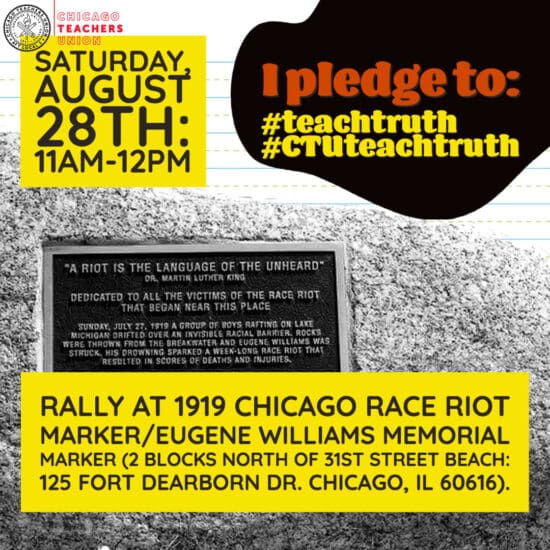
The Chicago Teachers Union is hosting a Pledge to Teach Truth Day of Action at the site of the Chicago Race Riot marker. The “race riot” began on July 27, 1919. It was one extremely deadly and destructive instance of the white rage that fueled mob violence across the United States during the “Red Summer” of 1919. The invitation for the event notes, “As Chicago educators, we stand in solidarity with educators in these states who are fighting for their students and with educators across the country committed to empowering their students with the truth. We pledge to teach anti-racist, culturally responsive, and empowering curriculum.”
Baltimore, Maryland
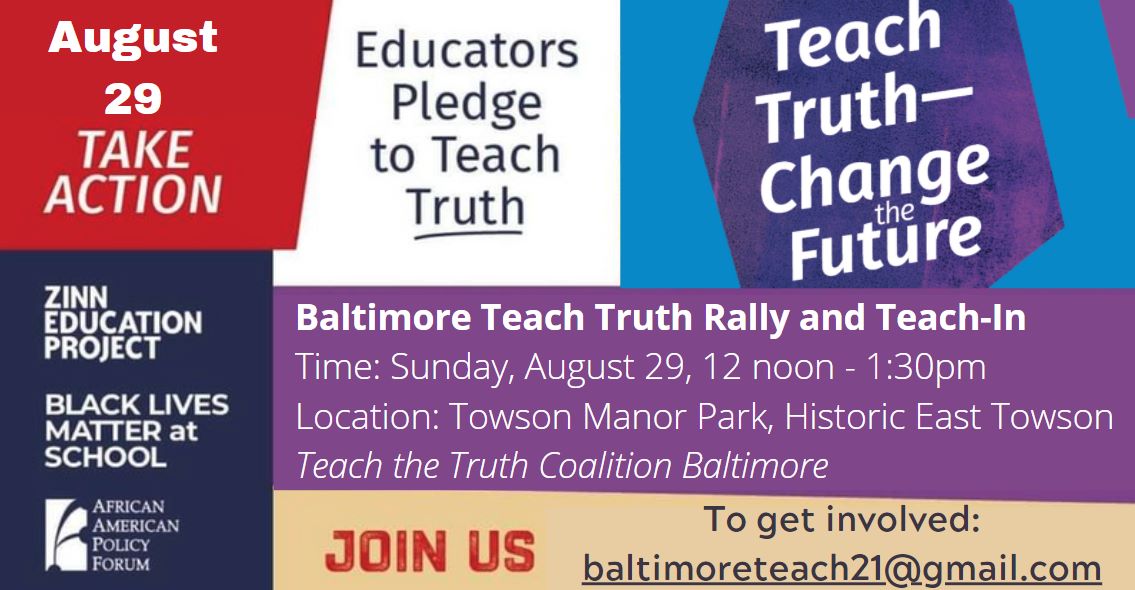
Join teachers at the East Towson community, founded by people formerly enslaved by the Ridgley family Hampton plantation, and close to the Towson Courthouse which has a plaque committed by the Equal Justice Initiative in remembrance of the lynching of 15-year-old Howard Cooper in 1885, one of the first of such plaques in the state of Maryland.
Kansas City, Missouri
Lincoln College Preparatory Academy has been a center of Black educational excellence throughout the segregated history of Kansas City. Black Archives of Mid-America is an educational resource on the histories of African American persons in Kansas City and throughout the Midwest. Demonstrating at these locations allows us to align our minds and bodies with our commitment to teach Black historical truth.
Hosted by SURJ-KC (Showing Up For Racial Justice — Kansas City), in collaboration with the Black Archives of Mid-America, Brothers Liberating Our Community (BLOC), JUST Systems, African American Policy Forum, Revolucion Educativa, Elements of Education Kansas City (EOEKC), and the Community Remembrance Project from the Equal Justice Initiative. Read more.
Portsmouth, New Hampshire
Hosted by CAFA (Community Advocates for All). What is now Prescott Park in Portsmouth was a major point of entry for slave ships in the late 17th and early 18th centuries. Learn more.
Princeton, New Jersey
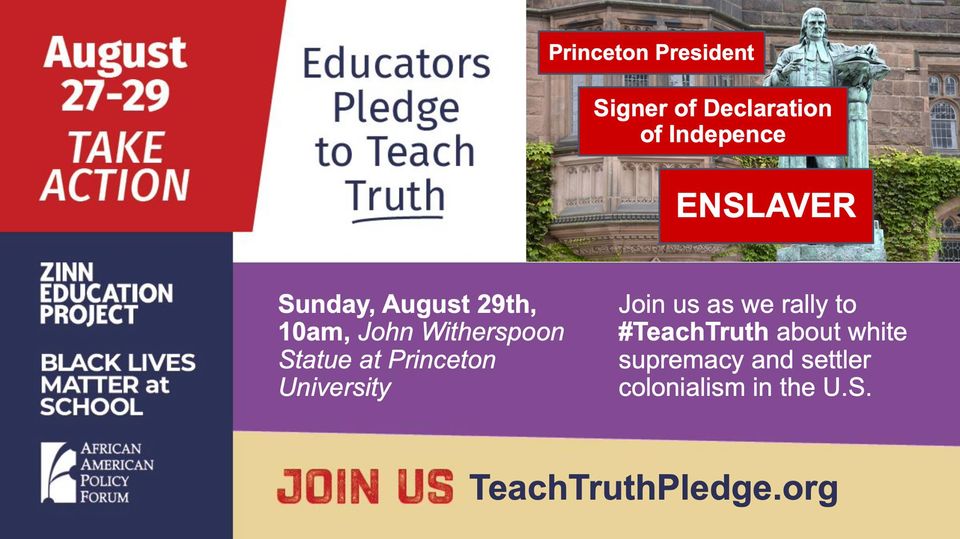
John Witherspoon statue at Princeton University. Witherspoon was president of the institution and a signer to the Declaration of Independence — and an enslaver who lectured against the abolition of slavery. As local educators we will gather to recommit ourselves to teaching the truth about the ongoing legacy of white supremacy and colonization in Princeton and all of the United States.
Trenton, New Jersey
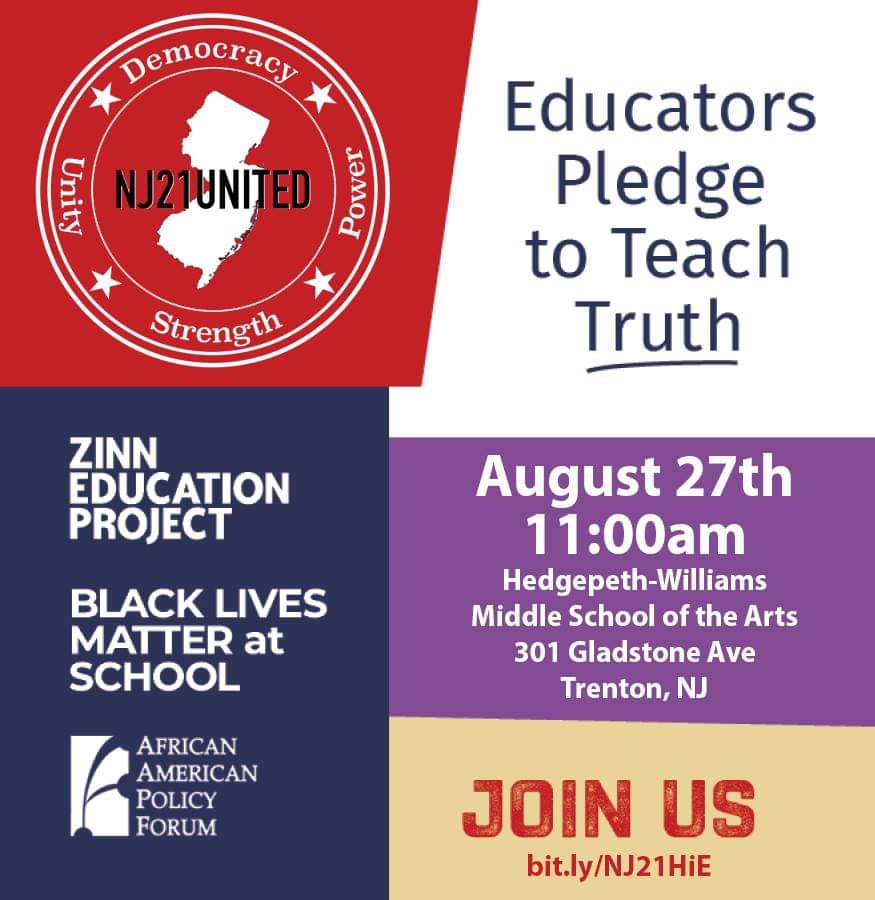
Hedgepeth and Williams v. Board of Education, Trenton, NJ, also known as the Hedgepeth–Williams case, was a 1944 New Jersey Supreme Court decision in a legal action brought by two mothers, Gladys Hedgepeth and Berline Williams, who sued the Trenton, New Jersey, Board of Education over racial discrimination against their children, Leon Williams and Janet Hedgepeth. It was a precursor to the Brown v. Board of Education case that prohibited racial segregation of school systems throughout the United States. Read about the event.
Saratoga Springs, New York
For this family friendly event, we will gather at the plaque honoring Solomon Northup outside the Saratoga Springs Visitor’s Center to learn about the true history of the hero of Twelve Years a Slave. August 28th is also Travers Day and we will take time to recognize a fuller history of racing and its legacy on communities of color.
After a brief teach-in, attendees will be invited to engage in public history by designing a memorial to Northup. Teachers, students, parents, and other community members will also be asked to sign onto a pledge to teach and seek truth in the study of history and to write their own pledges of commitment
Hosted by the Saratoga Educational Equity Network (SEEN), in collaboration with other community partners. Read more.
Newburgh, New York
The convening at Newburgh will be at the Newburgh Colored Burial Ground (commonly known as Newburgh City Court), Citizen Action, Melanin Unchained, and Next Step Hudson Valley are organizing locally in alignment with Zinn Educational Project’s national Critical Race Theory call to action. This gathering is an educational opportunity for the families of the Hudson Valley interested in learning and participating more.
Sag Harbor, New York
Hosted by the Eastville Community Historical Society of Sag Harbor. The society was founded in 1981 and chartered by New York State in 1986 to preserve the history of the working-class community of Eastville and to tell the story of St. David AME Zion Church a church, built in 1839 by African Americans and Native Americans on Eastville Avenue. It is widely believed to have been a stop along the Underground Railroad. Its founding Pastor, Rev. P. Thompson, was a noted Abolitionist and friend of Frederick Douglass. The Society also owns, upkeeps, preserves and protects the adjacent century-old cemetery in which African and Native Americans of the earlier St. David’s Church membership are buried, many of whom were Sag Harbor Whalers.
Youngstown, Ohio
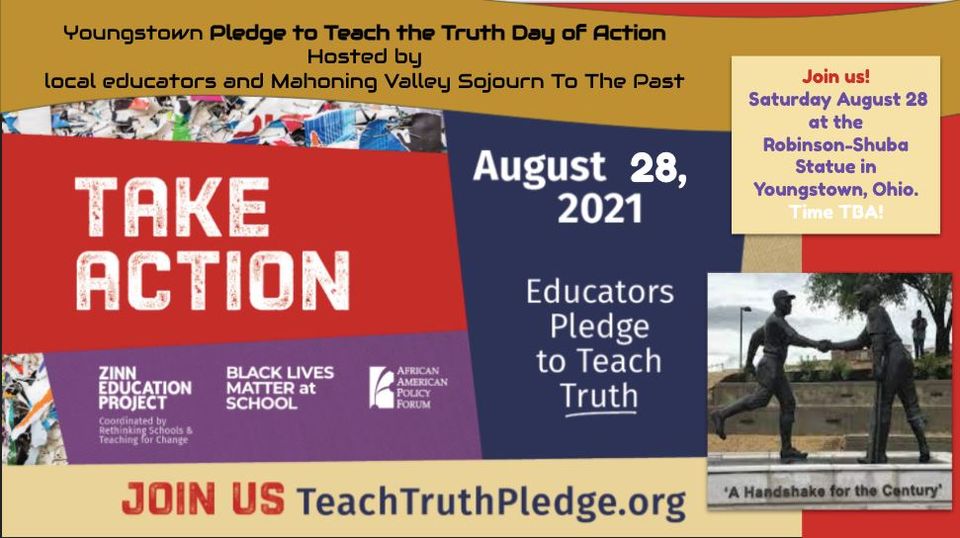
The larger-than-life statue commemorating the 1946 handshake of Jackie Robinson, the first African-American Major League Baseball player, and George “Shotgun” Shuba, his white teammate from Youngstown. The statue is located in downtown Youngstown’s Wean Park.
Philadelphia, Pennsylvania
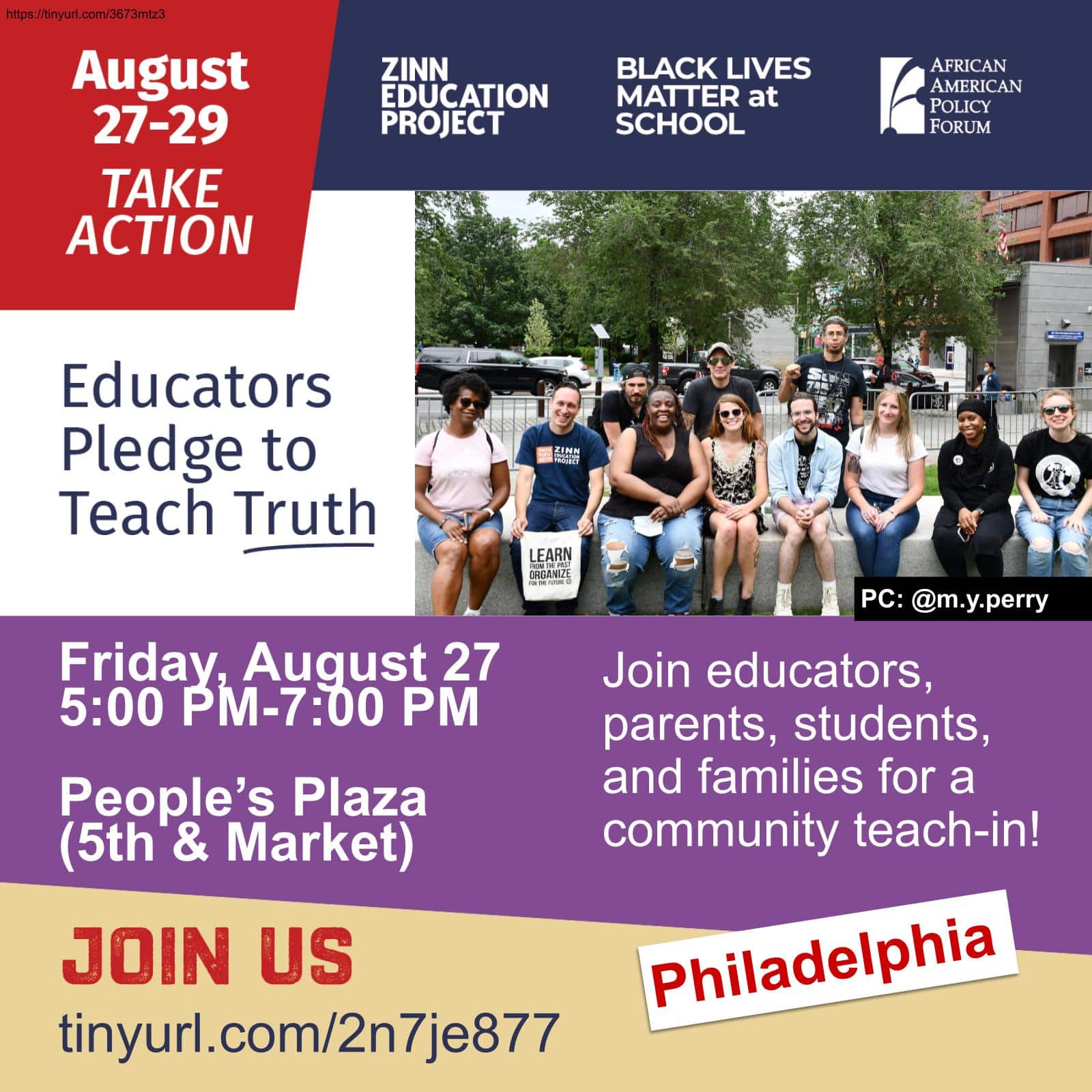
The President’s House in Philadelphia, Pennsylvania, was the third Presidential Mansion. Read about the teach-in.
North Kingstown, Rhode Island
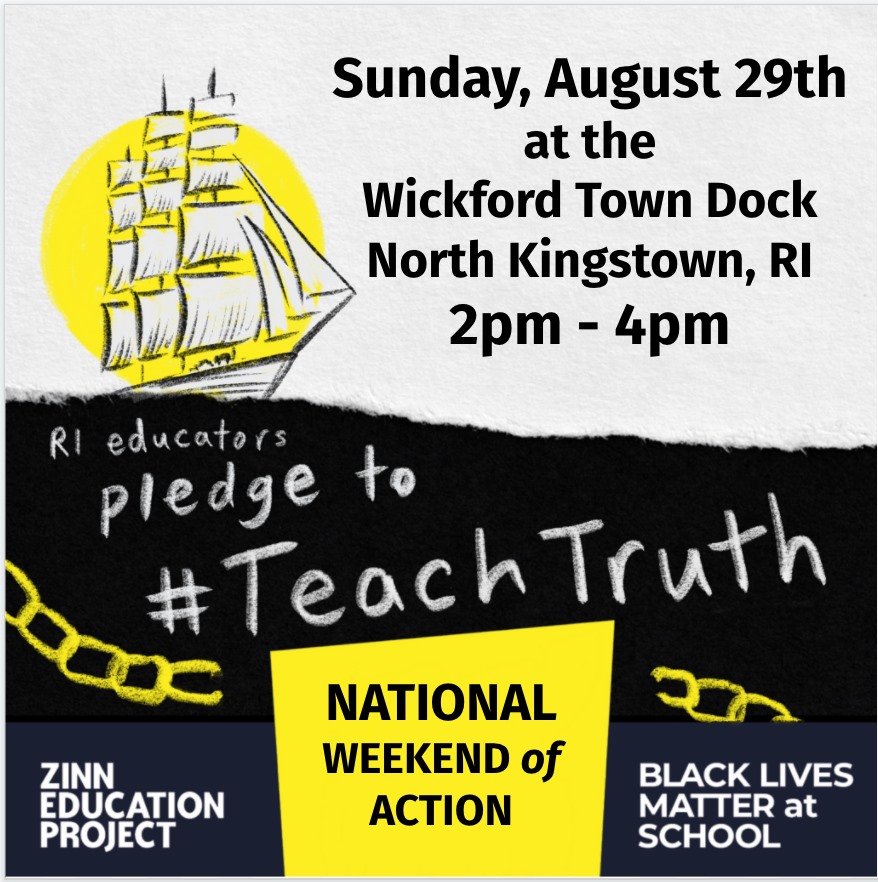
Wickford Town Dock in North Kingstown. Throughout the 18th century, Rhode Island held the highest percentage of enslaved people in New England. From Rhode Island, they were brought to work on the vast network of plantations in “South County” that stretched from the village of Wickford south to Point Judith and west to Connecticut. The enduring wealth of the area was founded on the forced labor of indigenous people and enslaved Africans who produced and grew many of the products sold in local and international trade. The Wickford Town Dock was the main commercial port in the region where people purchased in Providence or Newport were held and transported. Hosted by the #TeachTruth RI Coalition in collaboration with SURJ-RI.
Read testimony from Rhode Island students, educators, parents, and community members.
Seattle, Washington
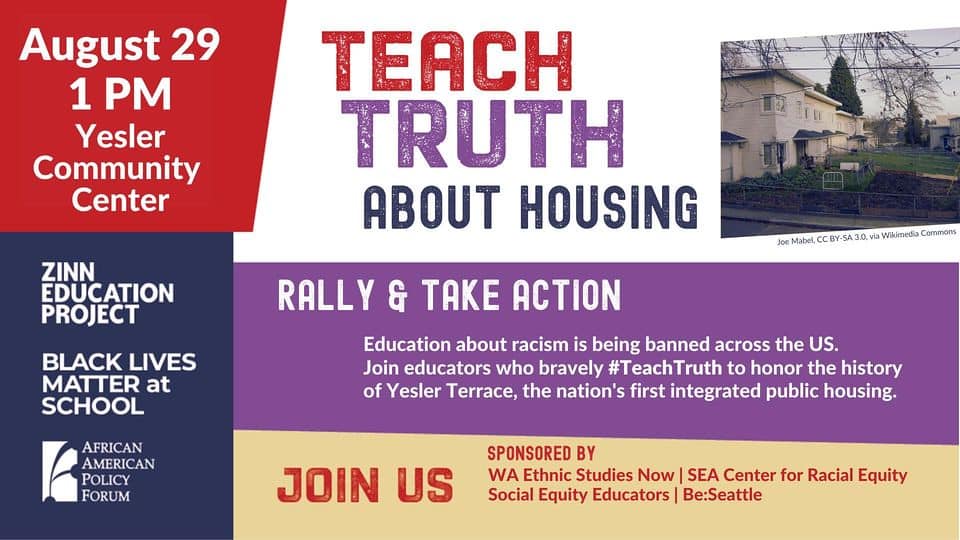
Yesler Terrace was completed in 1942 on a choice site with views of Mt. Rainier and Puget Sound. Yesler was Washington State’s first public housing and the nation’s first racially integrated public housing development. Jimi Hendrix is one of Yesler’s notable former residents.
Washington, DC
The evolution of the name [Meridian Hill Park] is a bracing reminder of how different D.C.’s history — and its present — has been for various groups of Washingtonians. In 1804, President Thomas Jefferson ordered a small obelisk placed a mile and a half north of the White House to serve as a longitudinal meridian for the new capital city. An owner who acquired the land after the War of 1812 was the first to call it Meridian Hill. The park itself was the brainchild of Mary Foote Henderson, the wife of a senator in post-Civil War Washington who lived nearby. She wanted the federal government to move the White House and the monuments to her neighborhood. She ultimately settled on convincing federal officials to build an Italian Renaissance-style park. To execute her vision, Henderson evicted the residents, a community of working-class African Americans. (Now, “The Henderson” is the name of a nearby boutique condo building whose website uses “Meridian Hill Park.”)” – Rachel Kurzius, The Washington Post
In 1969, Angela Davis sought to change Meridian Hill Park’s official name to Malcolm X Park in honor of Malcolm X. It was a primary meeting place during the Civil Rights Movement. However, Angela Davis’s push to rename Meridian Hill Park was denied. Read more.
These are just a few examples. Every Pledge to Teach Truth Day of Action event is at a historic site.


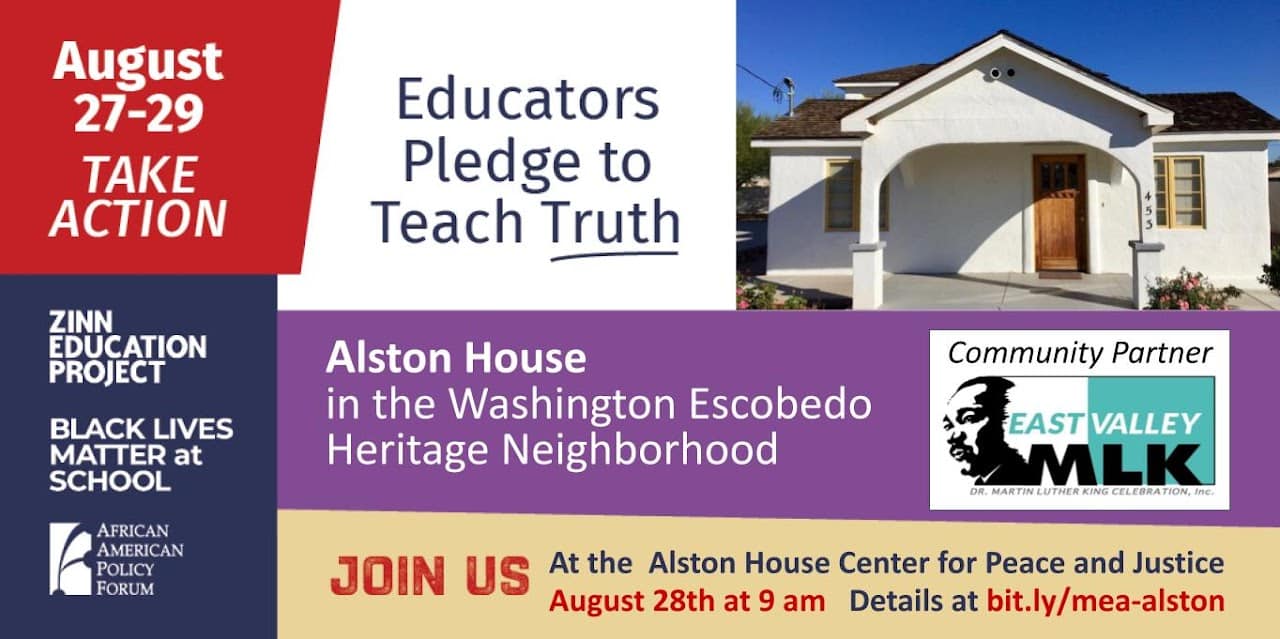
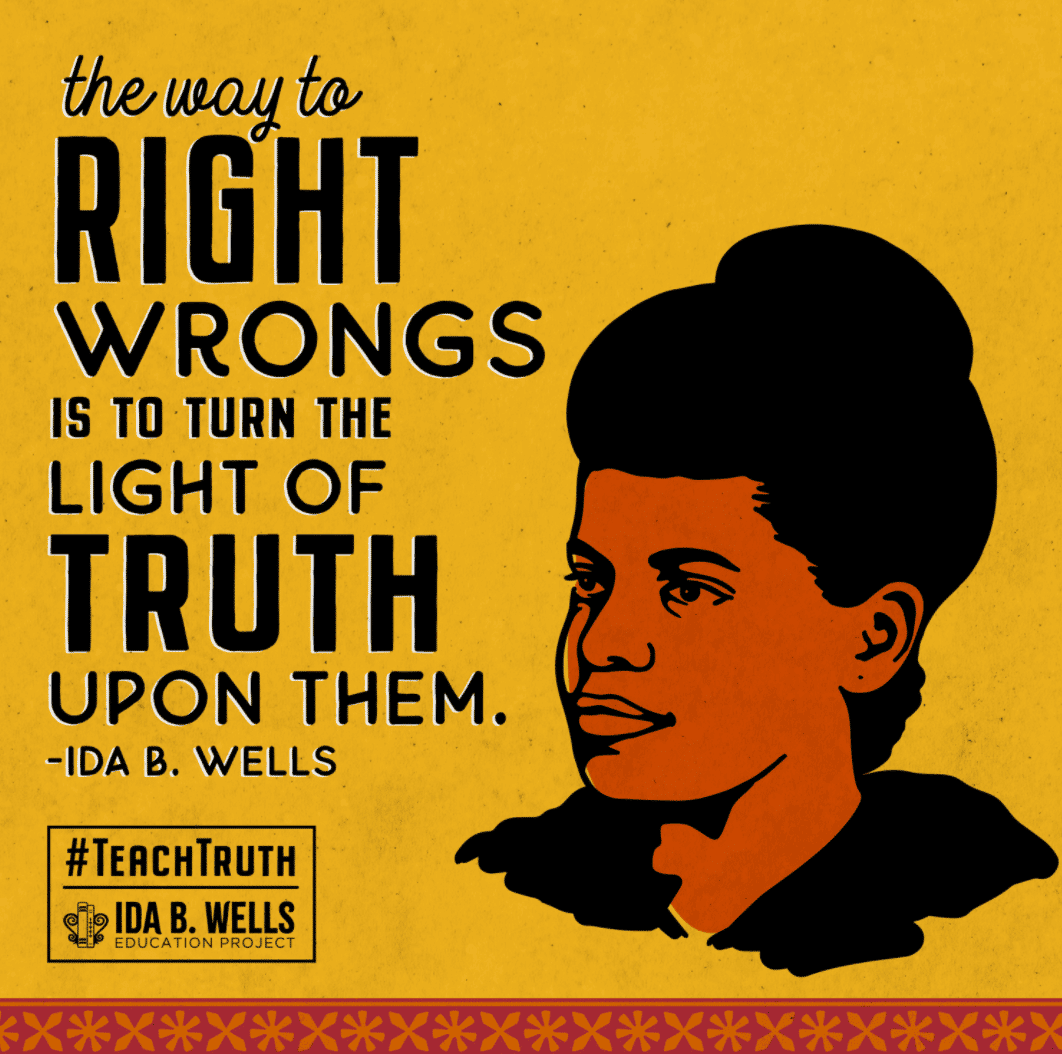
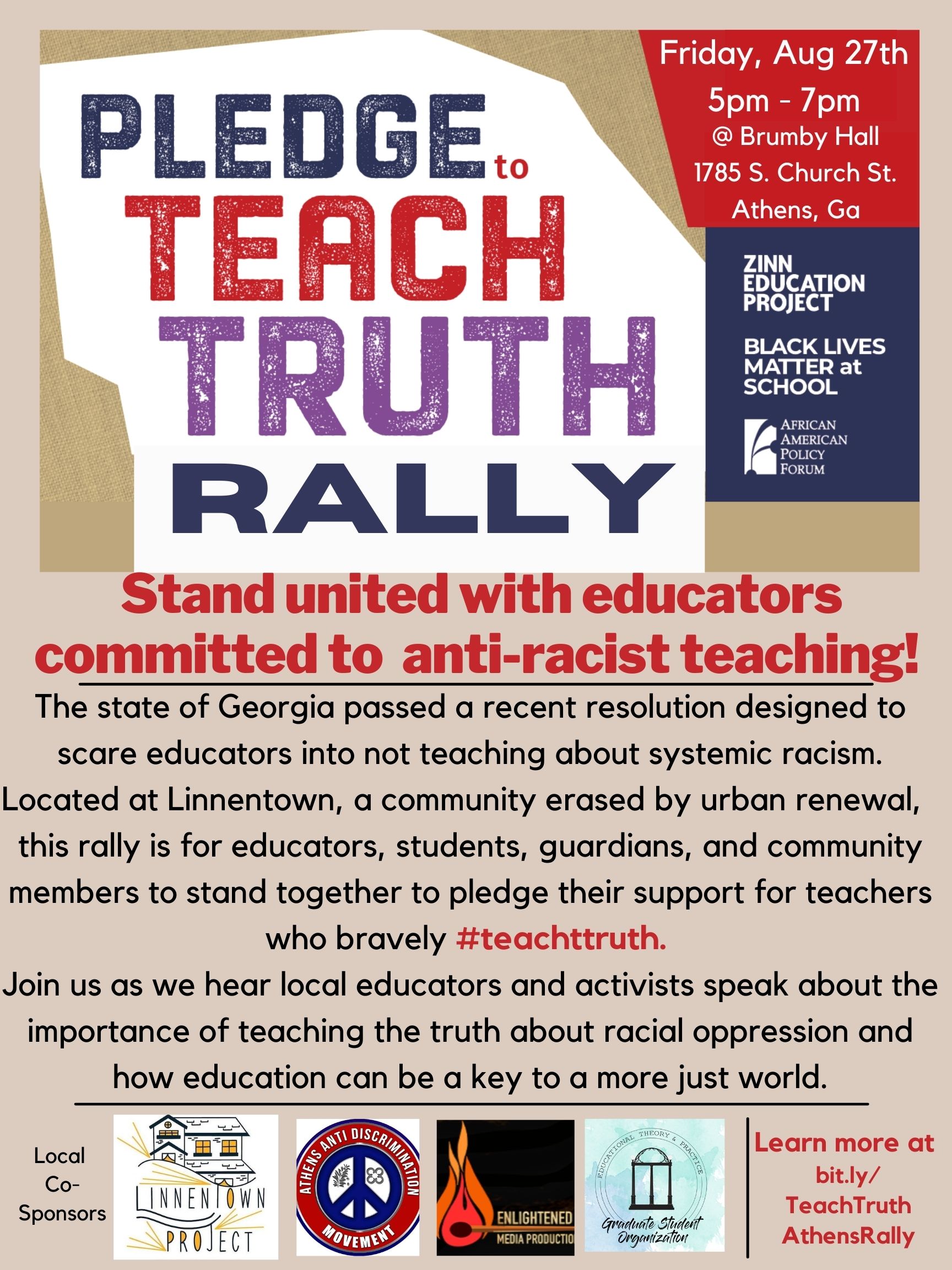
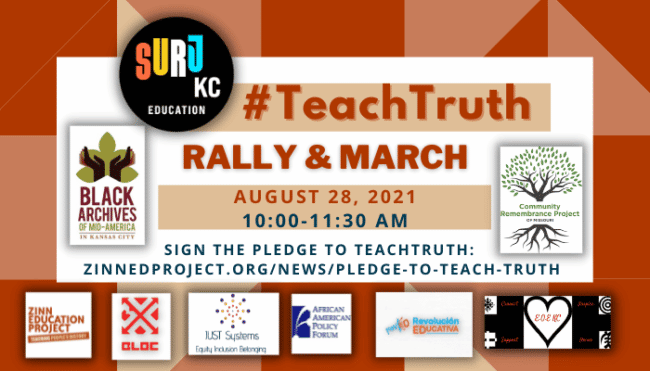
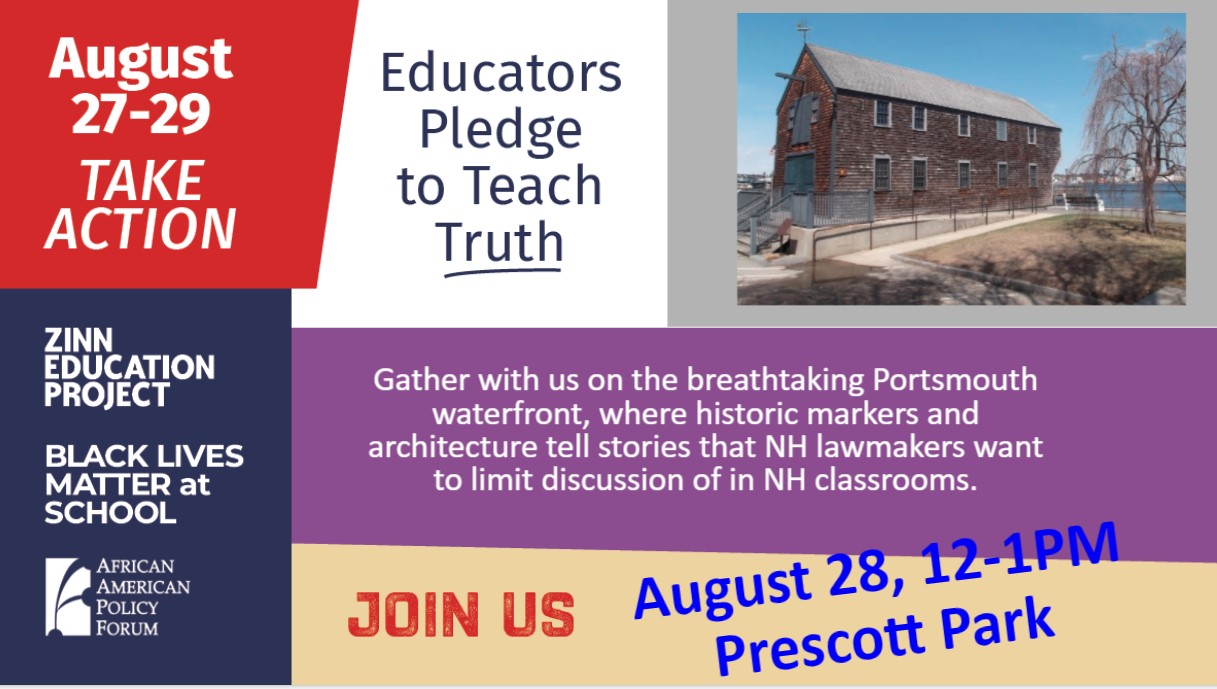
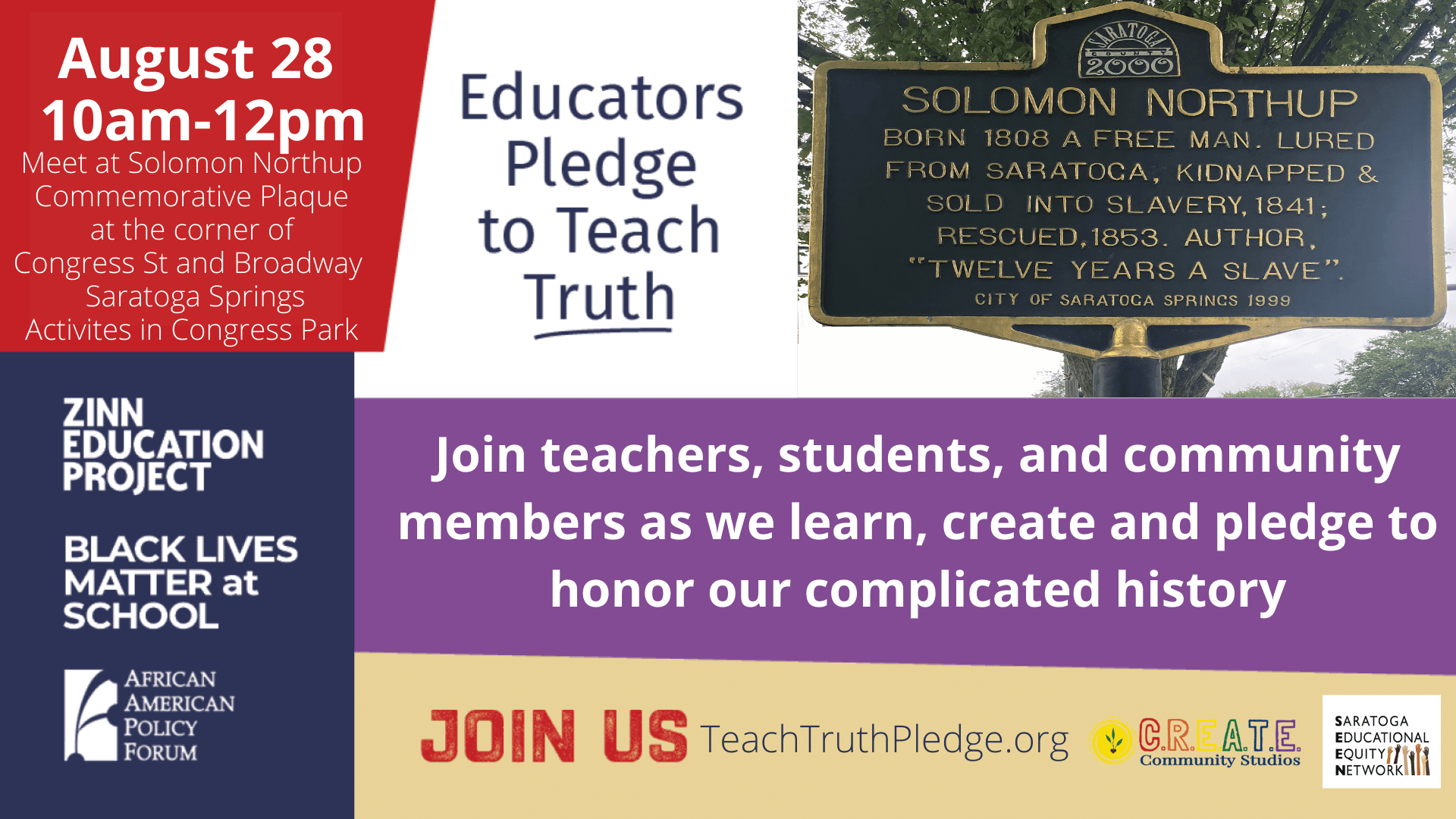
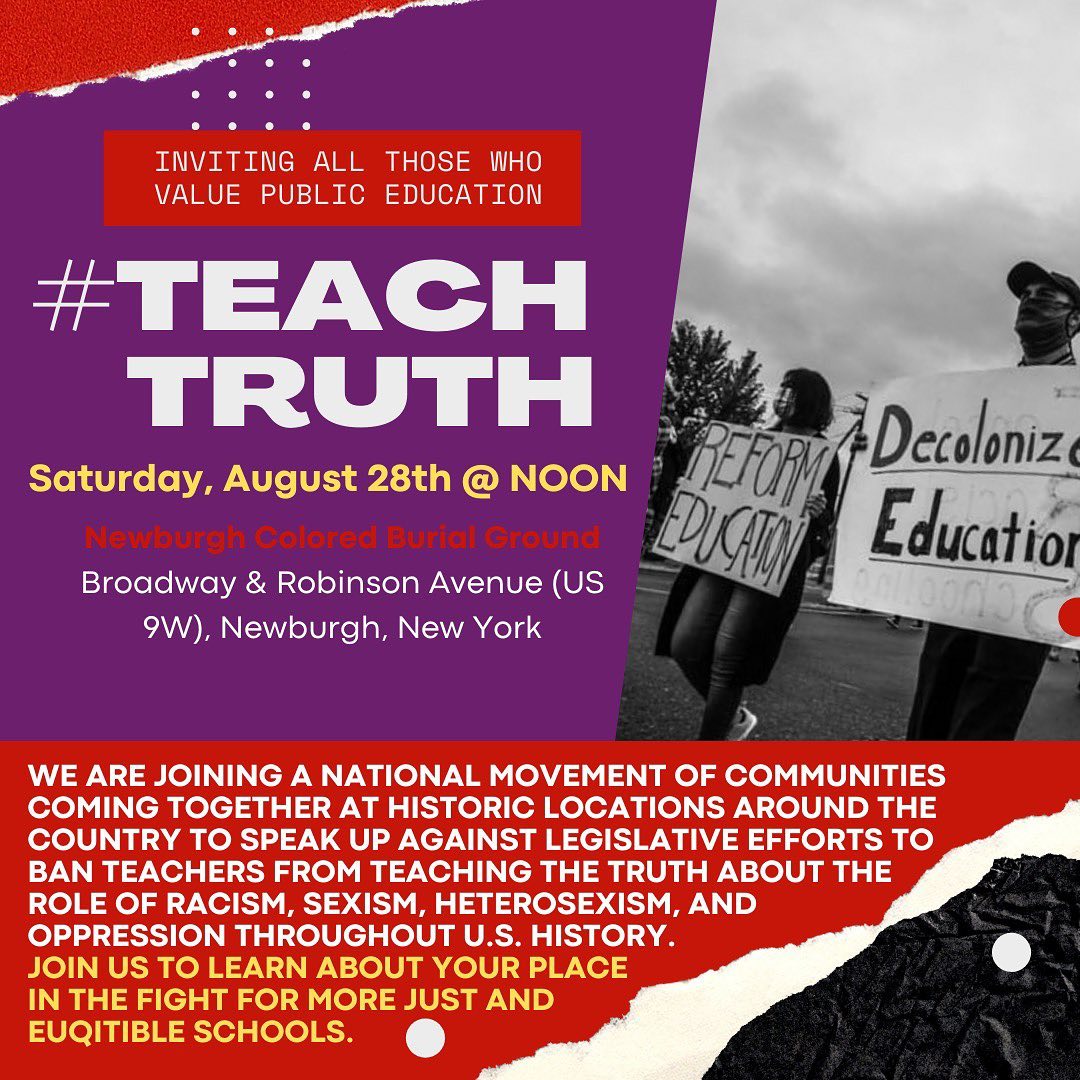
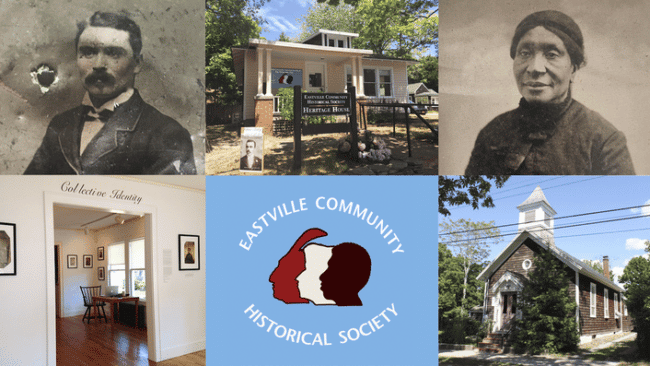
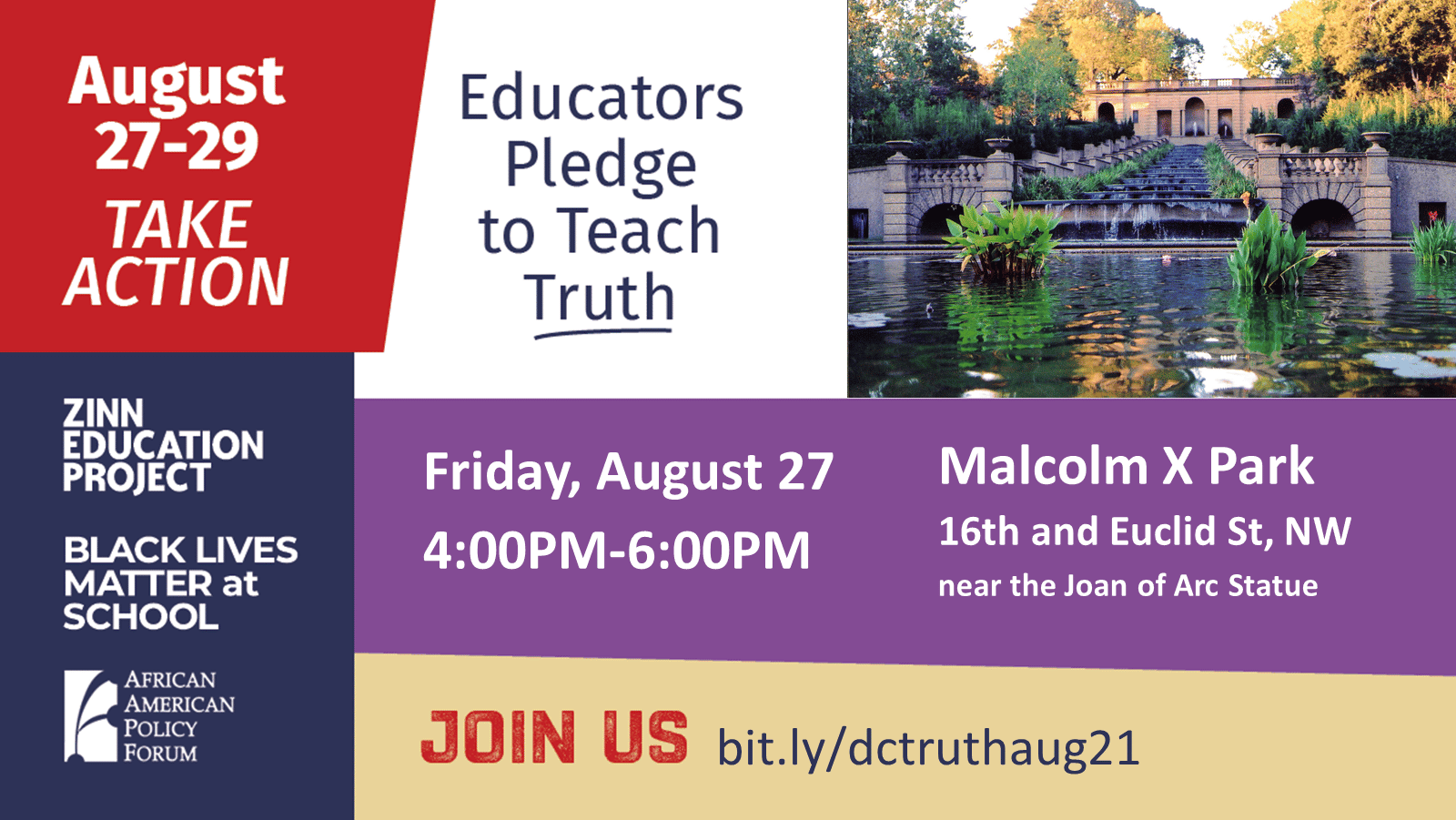






We’re teaching history.
It’s what we do.
#TeachTruth